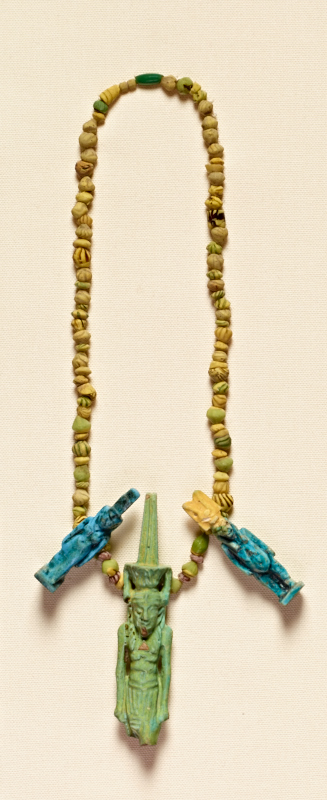Cantor Arts Center
328 Lomita Drive at Museum Way
Stanford, CA 94305-5060
Phone: 650-723-4177

Artist unknown (Egypt), Necklace with Amulets of Deities, n.d. Egyptian faience. Stanford Family Collections, JLS.21630 (strung together with JLS.21715, JLS.21739.2, and JLS.21295)
In 1901 the Egyptologist Émile Brugsch sold Jane Stanford 273 objects from his wife’s Egyptian collection. Brugsch wrote to Jane that his wife “does not want to keep on buying, prices have gone up so high, and herself therefore having lost all pleasure,” but assured Jane that she would “be greatly contented with the collection, there being only choice objects.” However, this did not necessarily guarantee that the whole collection was entirely ancient.
For instance, this necklace, which Jane purchased from Brugsch, strings together multiple ancient Egyptian figurines into a single nineteenth-century vision of antique beauty. Divinities are identified with their characteristic symbols and bodily appearance: the goddess Isis with a throne on her head, the god Nefertem with a lotus flower on his head, and the goddess Taweret (or Thoueris), who is part human, part hippopotamus, and part lion. According to the archaeologist Alexander Henry Rhind (1833–1863) such necklaces are “genuine in their details, [but] are equally false in their totality. Such an one is the necklace I also exhibit; it is ingeniously made up of beads from the breast-covering of a mummy, and strung upon threads made by unraveling mummy cloth. . . . Nothing like this was ever worn by an ancient Egyptian, yet every part of it is made of antique material.”